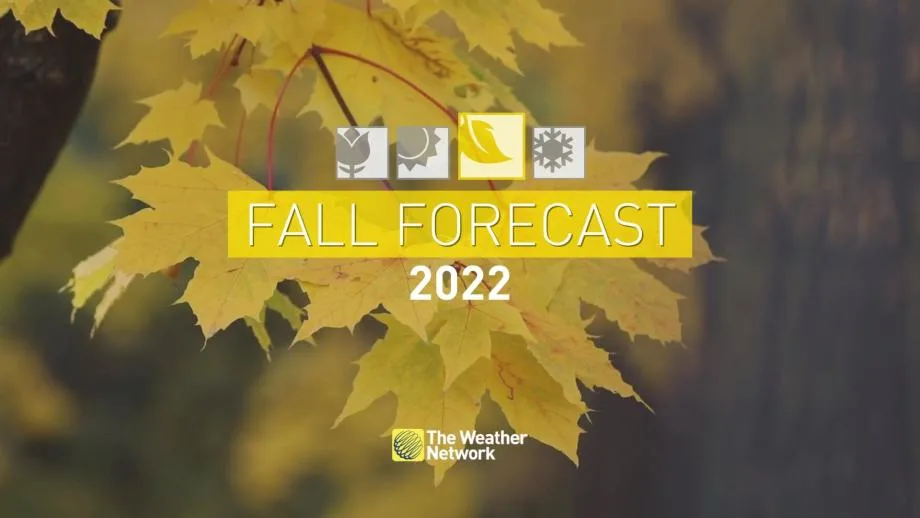
Canada's 2022 Fall Forecast: Is winter poised for an early arrival?
Will it be a more traditional fall season across Canada, or is winter-like weather lurking just around the corner? Here's what to expect over the next three months.
Most Canadians have enjoyed an extended summer season with dry weather and periods of mid-summer-like temperatures lasting deep into September. Will this slow start to traditional fall weather continue, or is winter poised for an early arrival? We dive deeper into the season, below.
The Weather Network's Official 2022 Fall Forecast for the rest of September, October, and November features a gentle start to the season for most of Canada, with extended periods of pleasant fall weather deep into October. However, the combination of warm and dry weather isn’t all good news, as this will result in the fire season lasting later than normal, especially for Western Canada.
For the season as a whole, we expect nearly all of Canada to see warmer-than-normal or near-normal temperatures. Notice that there is very little blue (colder-than-normal temperatures) on our forecast map below.
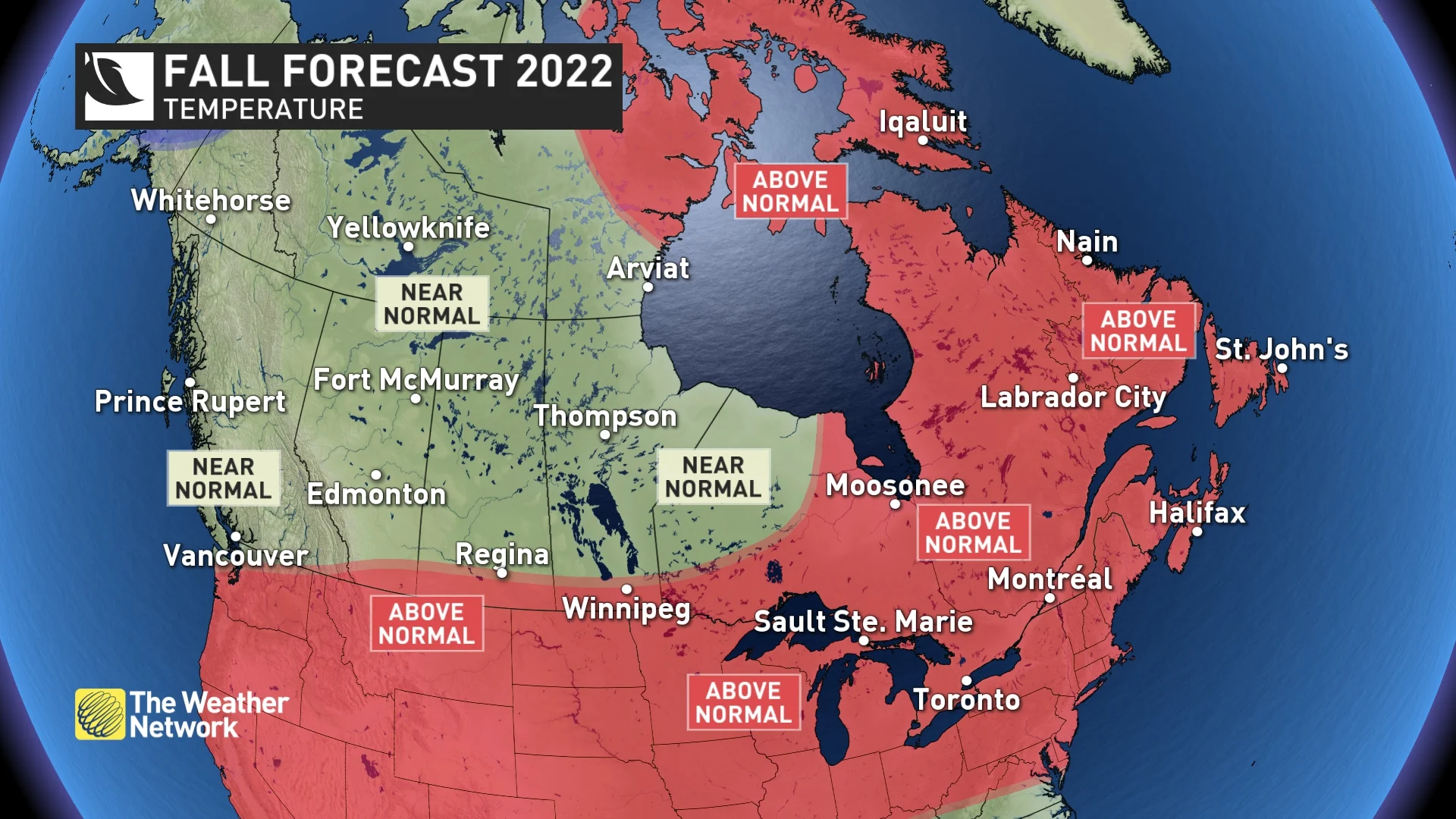
DON'T MISS: Why do leaves change colour in the fall?
However, that does not mean that we will just coast all the way through to the winter months with mild temperatures. During November, we expect to see periods of more typical late-fall weather, which will include snow for many Canadians.
Additionally, we expect that much of the country will experience fewer-than-normal fall storms. However, the storms that do occur could still pack quite a punch, and both coasts face an elevated risk for high impact storms and excessive rainfall events.
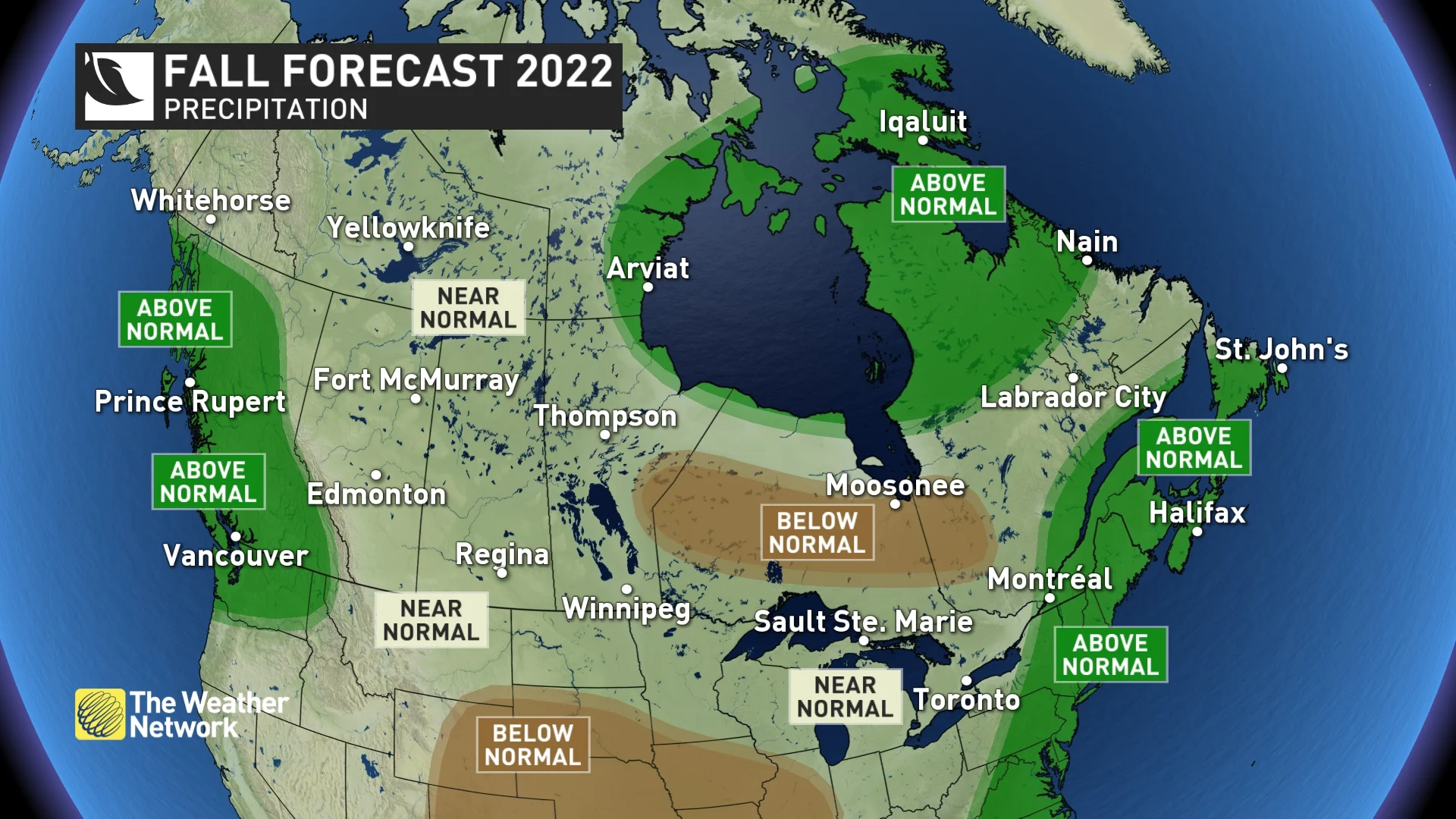
Below is a more detailed look at the regional conditions that we expect across Canada this fall.
British Columbia
A warm and dry start to the season means that the heightened risk for wildfires will continue later into fall than normal. However, a much wetter pattern is expected to return during October and November, with near-normal temperatures.
A typical number of fall storms and rainy days are expected, but this should result in above-normal precipitation totals as moisture-laden systems will bring the risk for excessive rainfall at times. Near-normal temperatures at the end of the season should also allow the ski season to get underway relatively on time.
British Columbia's 2022 Fall Forecast: How North Pacific anomalies will play a role
Alberta
A gentle start to the season is expected, with warmer-than-normal temperatures and drier-than-normal conditions continuing across the province. Unfortunately, that also means the wildfire season will linger later into the season than what we see most years.
However, as we get deeper into October and November, we expect a more typical fall pattern to develop, which will include wild temperature swings and tastes of early winter weather at times.
Precipitation totals, meanwhile, are expected to be near normal.
Prairies 2022 Fall Forecast: How fluctuating temperatures could impact you
Saskatchewan and Manitoba
Across the region, the start of the season is expected to be warmer and drier than normal, signaling a late start to more traditional fall weather.
However as we get deeper into October and November, we expect a more typical fall pattern to develop, which will include the changeable temperature swings that we expect from fall and the usual tastes of early winter.
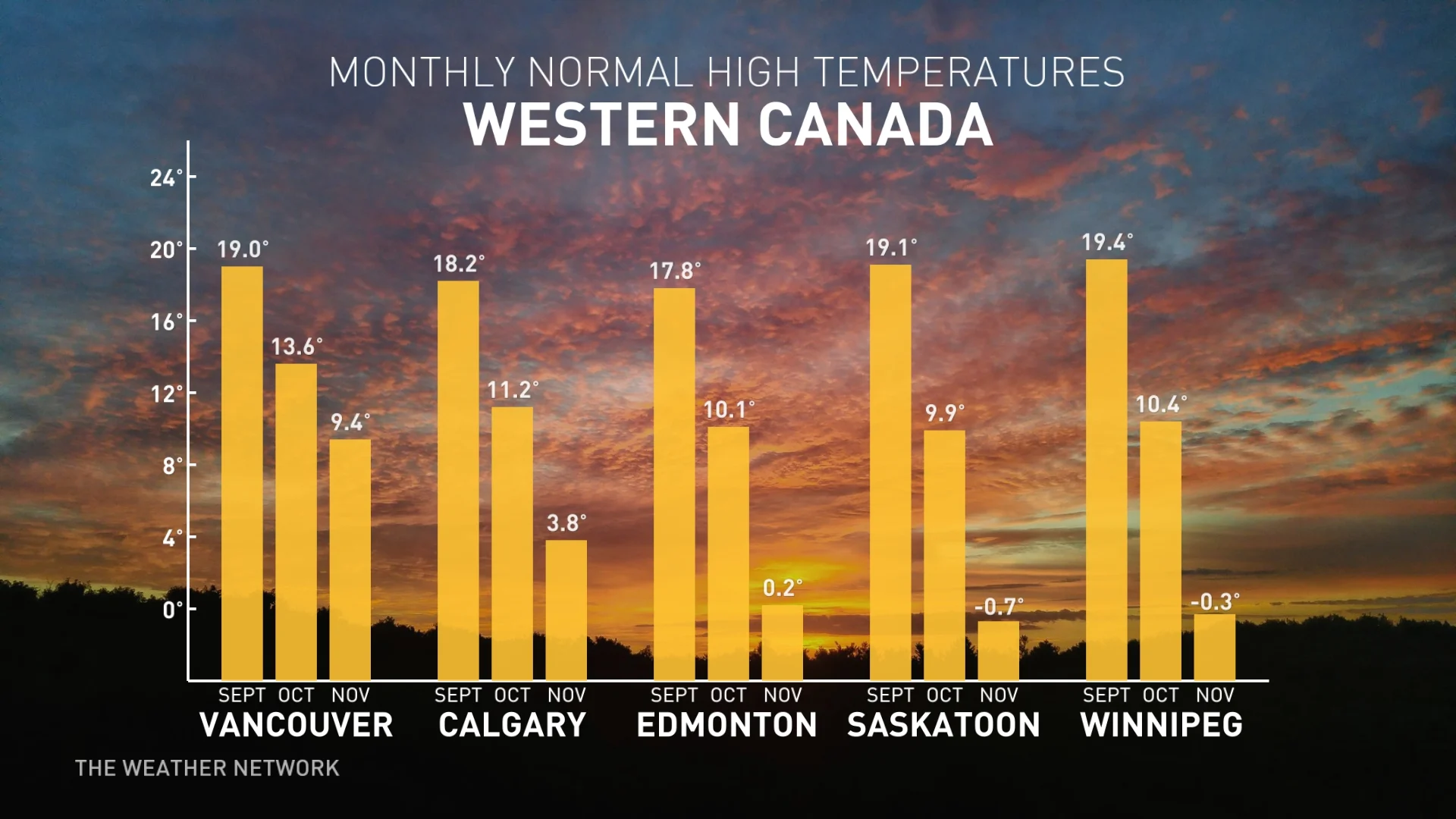
Precipitation totals for the season are expected to be near normal.
DON'T MISS: 5 lesser-known interesting facts about fall
Ontario
Warmer-than-normal temperatures are expected to dominate much of the fall season, with extended periods of pleasant weather continuing through October. This should provide ideal conditions at times for enjoying the fall foliage.
However, the final week of September will be colder than normal, and there are signs that the mild pattern will break down before we get to the end of the season, which would result in periods of more typical late-fall weather during November. Keep in mind, November is the month that typically brings our first tastes of early winter weather.
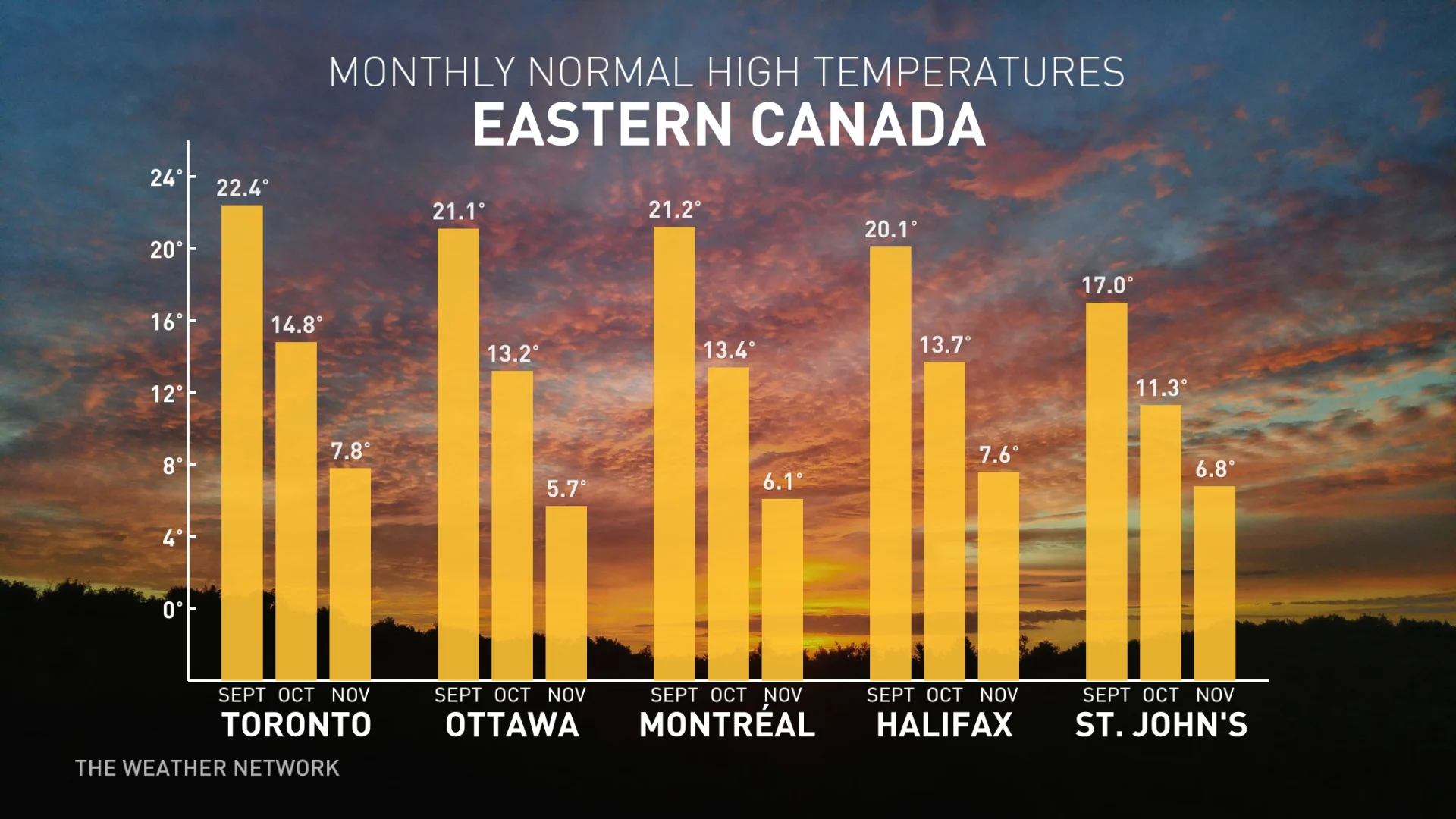
RELATED: What's considered a 'classic' fall storm?
The months of October and November are also well known for their fall storms. This year we expect fewer storms than what we typically see, but a couple that do occur could still pack quite a punch with strong winds and enough precipitation to bring our totals to near normal for the season.
Ontario's 2022 Fall Forecast: Will the big 'S' word impact the season?
Quebec
Extended periods of pleasant weather are expected through October, with warmer-than-normal temperatures forecast for the season as a whole. This should provide ideal conditions at times for enjoying the fall foliage.
However, the end of September will be colder than normal and there are signs that the mild pattern will break down before we get to the end of the season, which would result in periods of more typical late-fall weather during November. Keep in mind, even a mild November could bring a taste of early winter weather with significant snow.
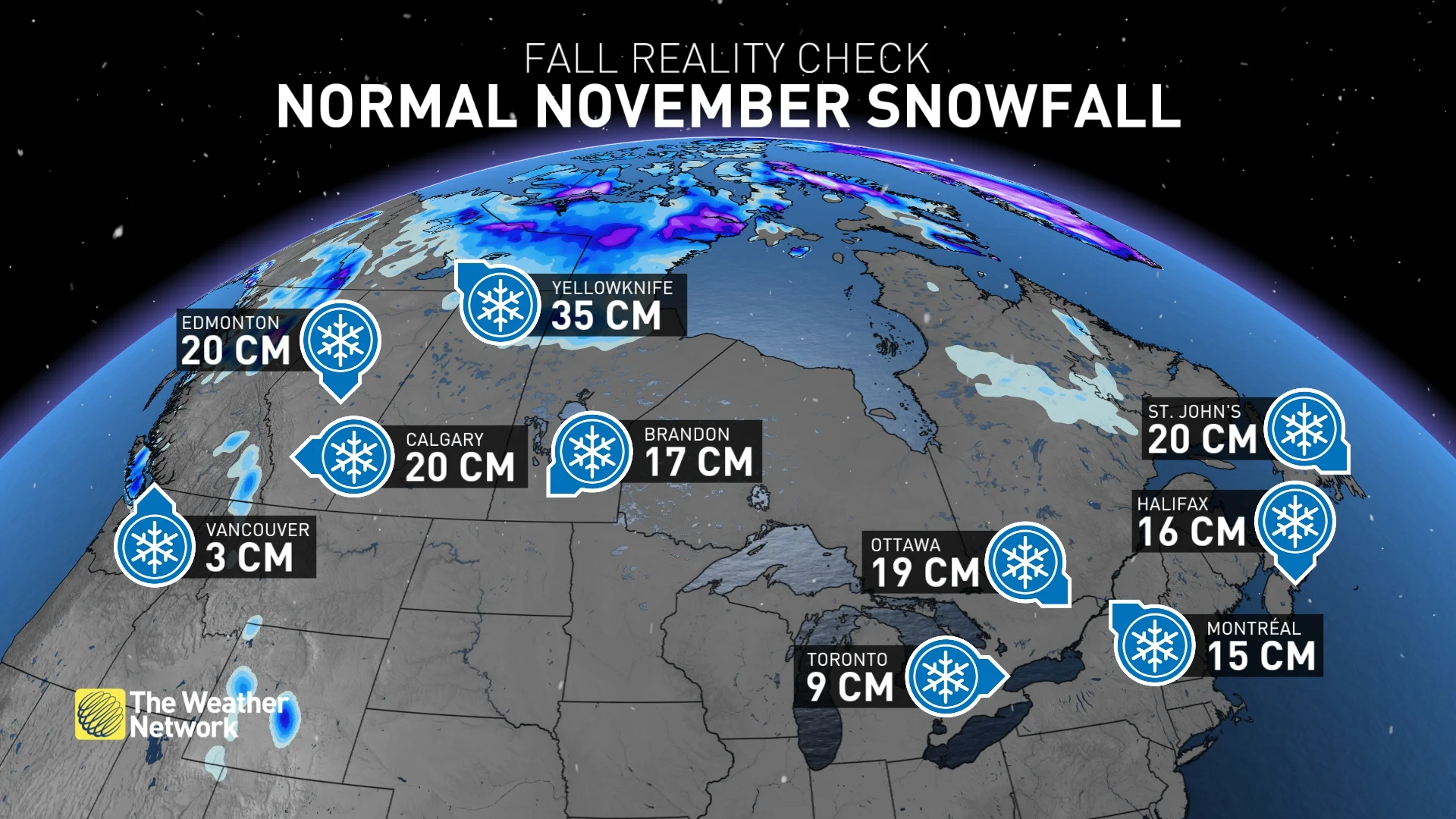
As with Ontario, this year we expect fewer storms than usual for Quebec. Those we do see, however, could still deliver strong winds and heavy rain.
Additionally, we will continue to keep a close eye on the tropics and the heightened risk for heavy rain from the remnants of tropical systems across southern and eastern parts of Quebec.
Quebec's 2022 Fall Forecast: How subtropical moisture impacts the season
New Brunswick, Nova Scotia & P.E.I.
Warmer-than-normal temperatures are expected to dominate the fall season, including enough periods of dry weather so you can get out and enjoy the fall foliage.
However, October and November have a reputation for bringing a return to a more stormy pattern. This year, we expect the number of fall storms to be near normal or possibly even below-normal. However, with usually warm ocean water surrounding the region and a tendency for storms to move more slowly, we have a heightened risk for high impact storms and excessive heavy rain from the storms that do track across the region. This is one of the keys to why we are forecasting above-normal precipitation totals for the season.
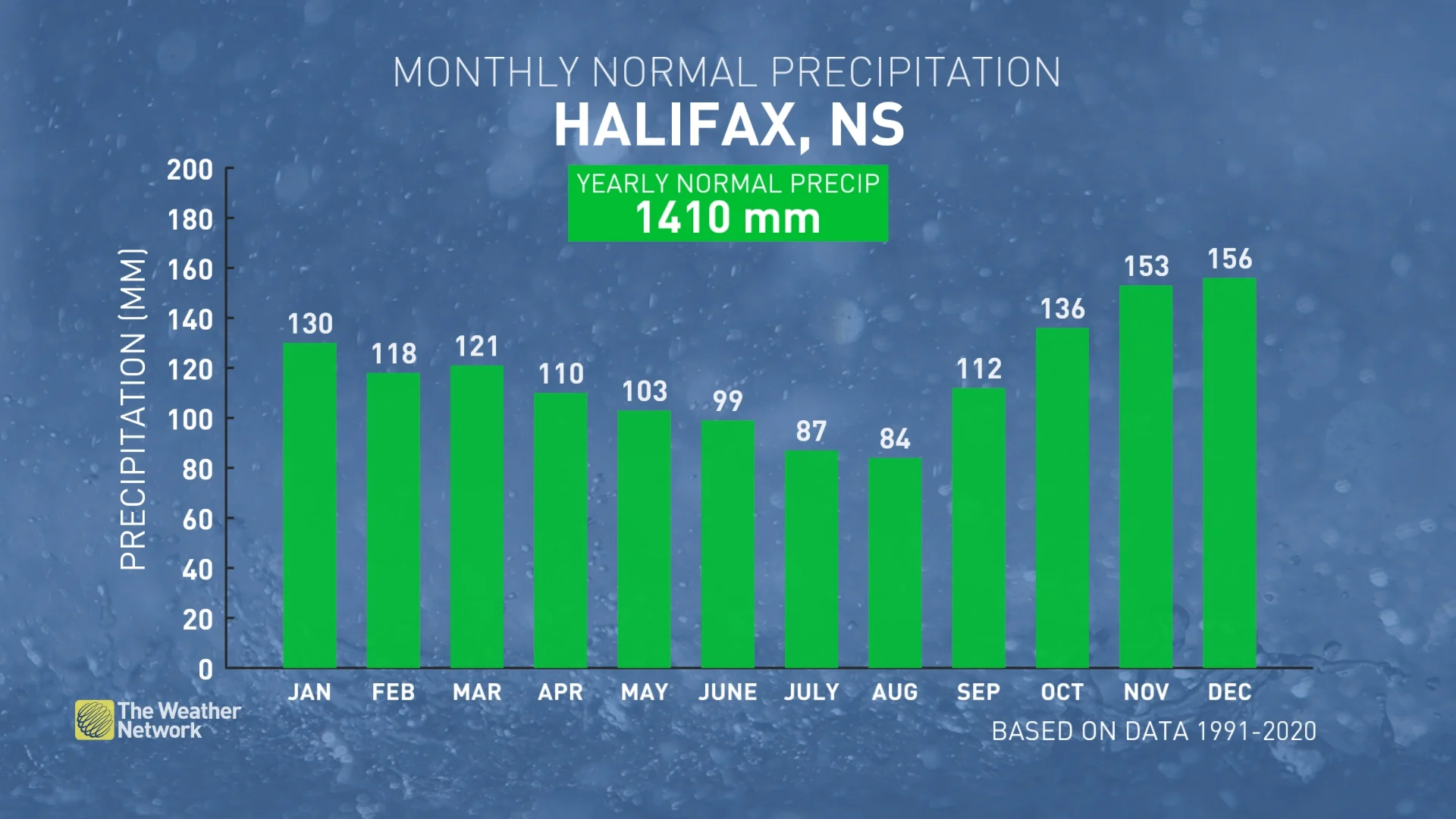
Additionally, the second half of the hurricane season will be more active, so we will continue to closely watch the tropics with a heightened risk for tropical systems to impact this region with damaging winds and localized flooding.
Atlantic's 2022 Fall Forecast: How an onshore flow comes with a cost
Newfoundland & Labrador
After a very warm summer, we expect that warmer-than-normal temperatures will continue to dominate during the fall season. Of course, even a mild November is capable of delivering shots of early winter-like weather, including heavy snow to the province.
Fall has a reputation for bringing a return to a more stormy pattern. During the upcoming season, we expect the number of fall storms to be near-normal or possibly even below-normal. However, with unusually warm ocean water surrounding the province and a tendency for storms to track more slowly, we expect a heightened risk for heavy rain from a few of the storms that impact the region.
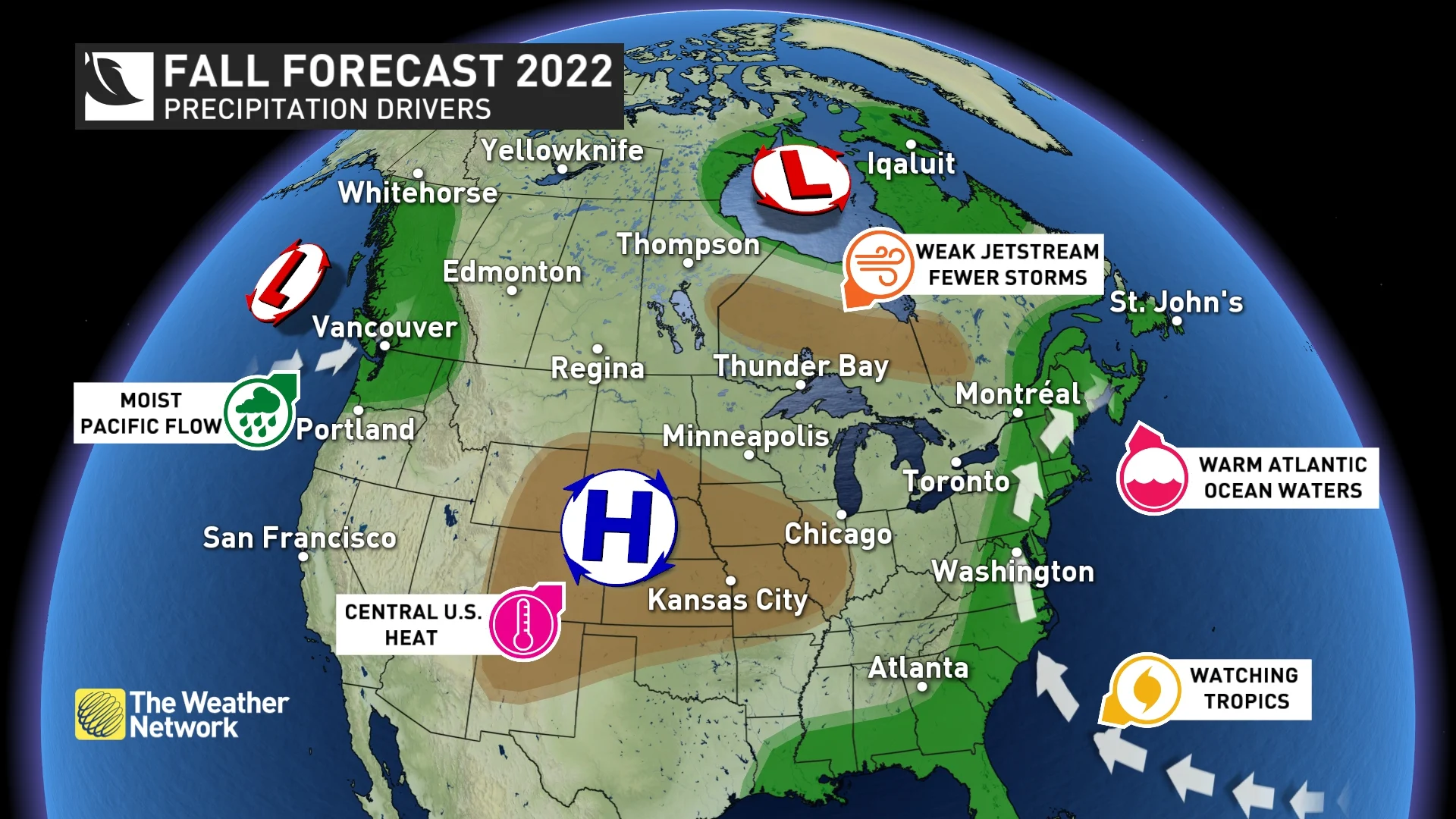
In addition, the second half of the hurricane season will become more active, so we will continue to monitor the tropics due to the heightened risk for tropical systems to impact this region with high winds and a risk for flooding.
Northern Canada
Warmer-than-normal temperatures and above-normal precipitation totals are expected across eastern Nunavut, including Iqaluit, with much of that precipitation soon to fall as snow despite the milder temperatures.
Elsewhere across the region, including western Nunavut, most of the Yukon and Northwest Territories, we expect near-normal temperatures and near-normal precipitation during the fall season.











